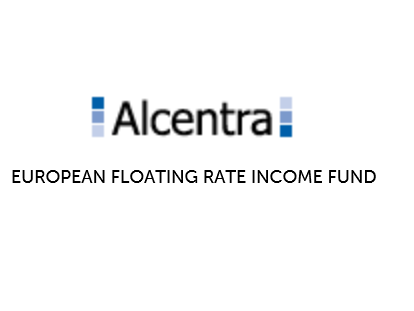Over March, we looked at Alcentra European Floating Rate Income (AEFS), after it announced its intention to wind-up – you can access the story here.
In an update released today, AEFS said that the fhe fund was down (17.18%) in gross terms over March, behind both the Credit Suisse Western European leveraged loan index, which was down (13.86%), and the Credit Suisse Western European leveraged loan index excluding USD which was down (14.64%) for the month.
European loans did not participate as much in the rally after falling less than stocks
AEFS released the following notes:
“During the month concerns around the impact of the covid-19 virus outbreak evolved from an initial focus on the risk of a supply shock driven by Asian shutdowns, to concerns around the impact of the pandemic on businesses globally. This drove markets lower, with equity returns c.-(15%)-(20%) in the month. Given this background, European loan prices were down (14%), with US loans and high yield markets seeing similar price declines. While the sectors most exposed to the impact of the quarantine and closure measures (leisure, travel, retail, gaming) underperformed, other sectors were not exempt as dealers marked all positions lower and liquidity was thin in early March. Sentiment showed tentative signs of improvement towards the end of the month, as extraordinary fiscal stimulus and monetary support measures were unveiled. While equity markets benefited from this improved sentiment, recovering somewhat from (25%)-(30%) at the trough, European loans did not fall as much so also did not benefit as much from the rebound.
Given conditions during the month, the market for new loan issuance was closed with scant new deals pricing. Similarly CLO formation was also muted, with three deals pricing early in the month, but afterwards the market was closed to issuance. While the prospect for material new CLO issuance is low, we do expect the market to explore pricing static or short maturity CLOs which would be a positive for loan demand.
While the S&P default rate for the 12 months ending March remained broadly stable at 0.43%, the impact of the virus on certain corporates is likely to lead to an increase from this low level. Initially we believe this will be brought on by more directly impacted businesses, where travel and mobility restrictions, as well as working capital unwinds, mean they are at risk of seeing near term liquidity pressures. S&P are now forecasting an 8% default rate for the European market in 2020, with a low double digit forecast for the US market given higher exposure to the energy segment. However, the final figure on defaults and indeed 2020 performance, will be directly correlated to the ongoing duration and severity of the outbreak.
Our focus remains on the impact of containment measures on the credits in our portfolio. We are working closely with management teams and financial sponsors to assess the impact of mobility restrictions on demand and cash flows. While government fiscal support appears to be helping, the more directly exposed sectors (travel, leisure, retail etc) are our focus. These sectors remain a relatively small part of the market and our fund at c.10%, while the market’s largest exposures remain more stable and defensive sectors including healthcare, telecoms and cable.
While the first half of the month saw the themes of dealer de-risking and weaker liquidity, more recently we have seen signs of stability and even inflows as some investors look to take advantage of the market’s dislocation. So, while the prospect for continued volatility remains and default rates are likely to increase from current low levels, we do think current market conditions may provide an attractive entry point, particularly for assets in more defensive sectors.”
Comment from the manager: some defensiveness in healthcare, telecoms and cable credits
“Generally, the best performing credits in the fund were in more defensive sectors such as healthcare, telecoms and cable which traded off less than the broader market in the extreme volatile scenario. The weaker names in the fund were those with more direct impact from the quarantine and movement restrictions, generally in the retail, leisure and travel sectors. The weakest credit was a French commercial services and equipment provider which traded down on the expectation of weaker results due to government mandated shut downs. The second weakest credit was a UK based childcare provider which also traded down on concerns around the impact of quarantine and shut down measures on demand.”
AEFS: Thoughts from Alcentra European Floating Rate Income on conditions through March
